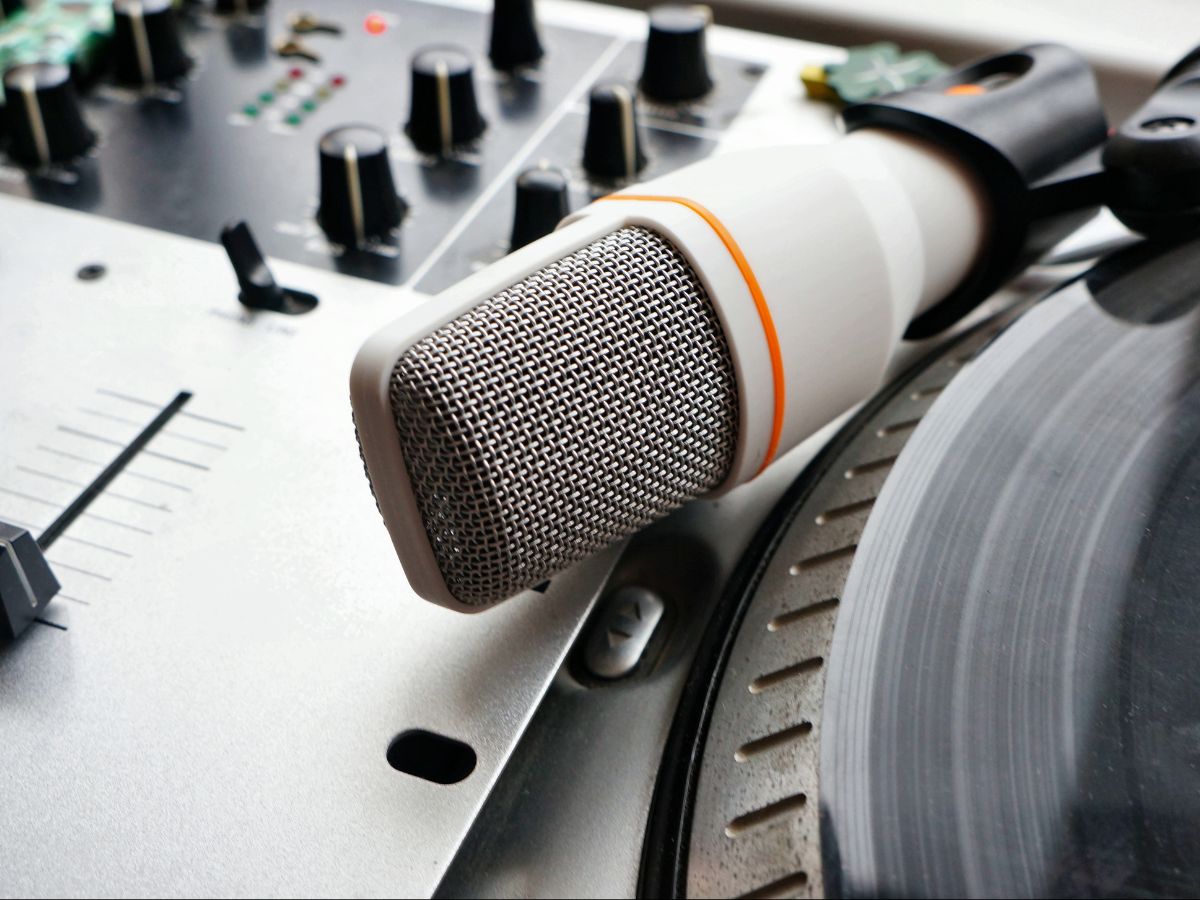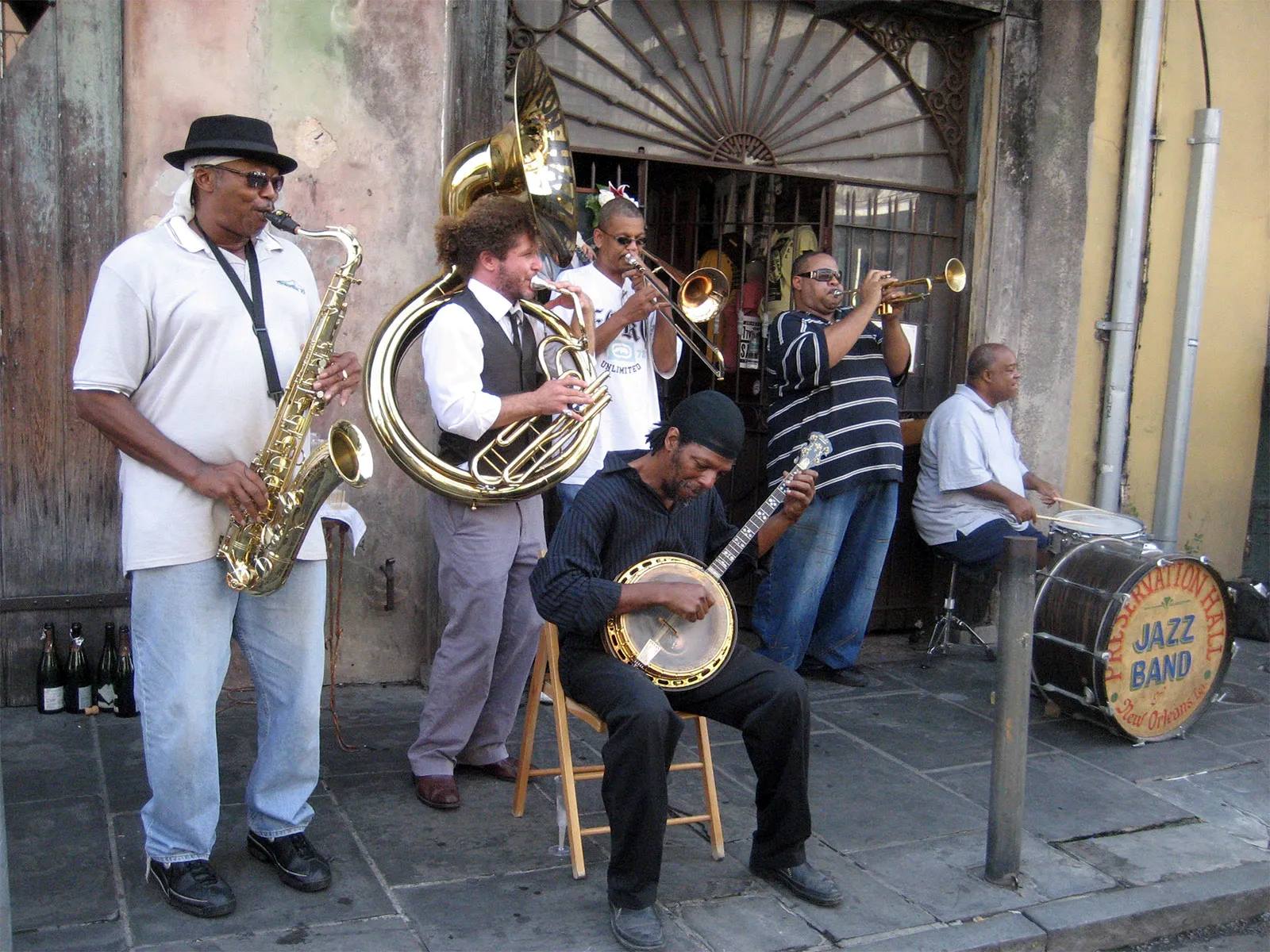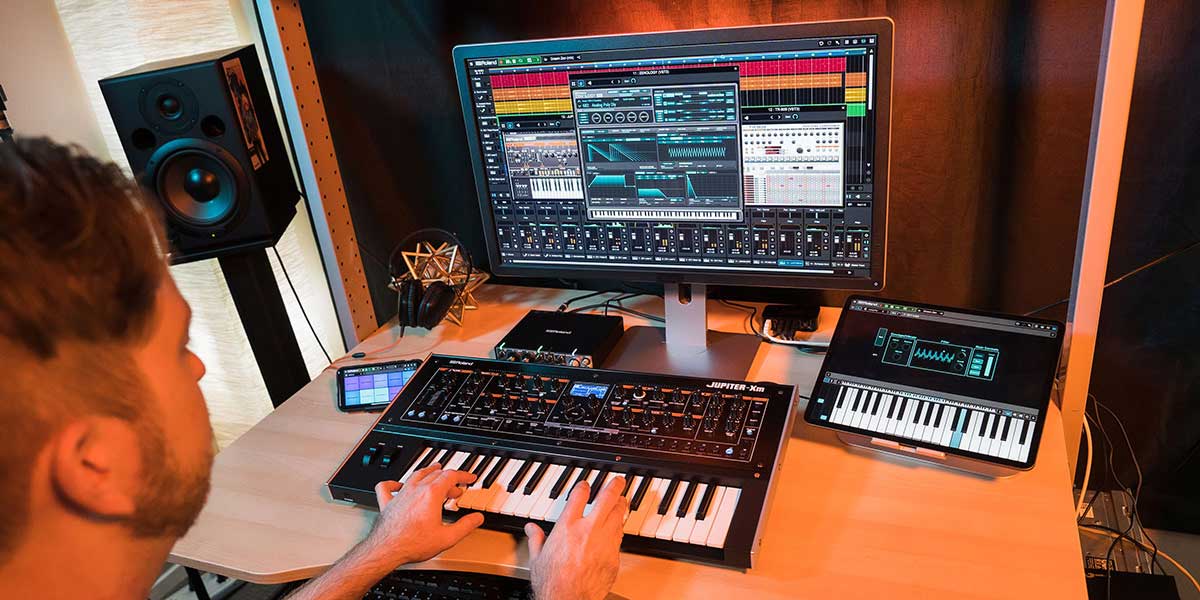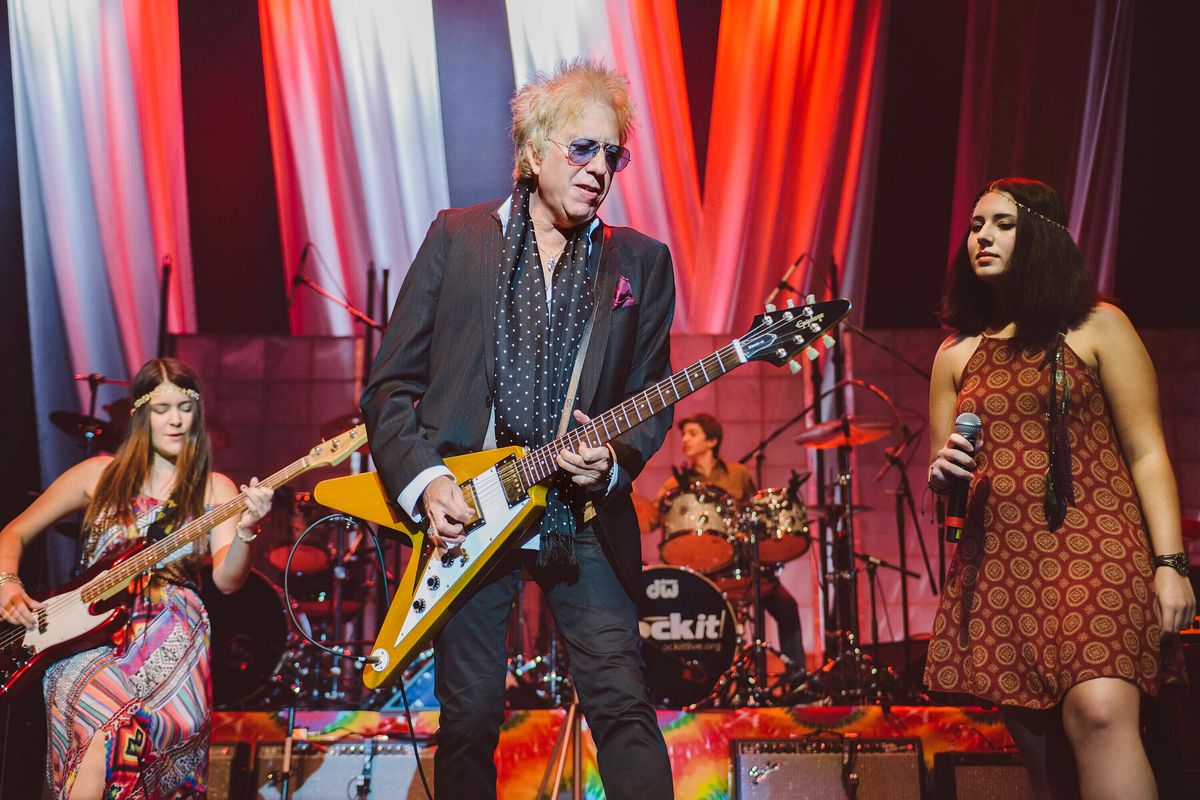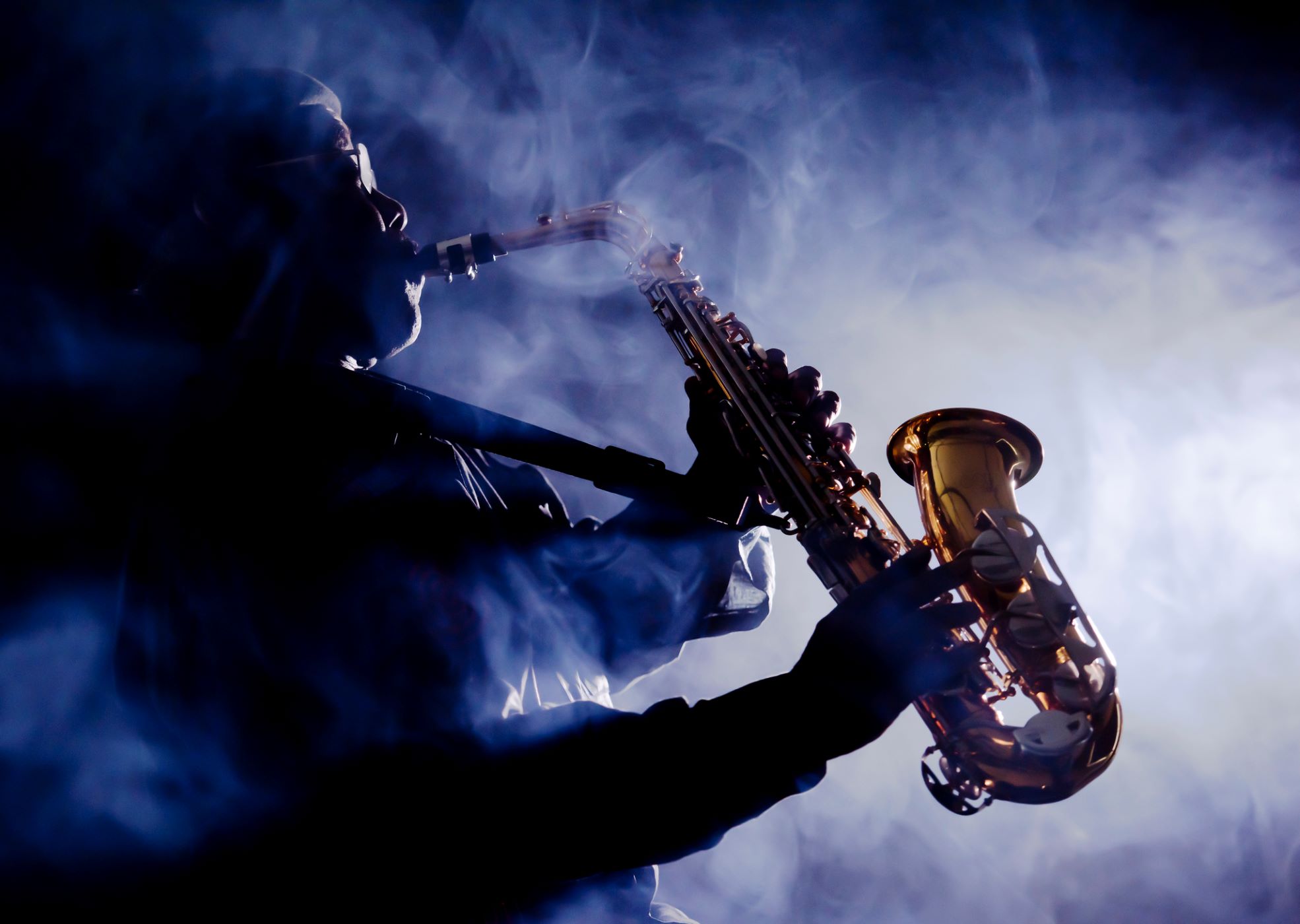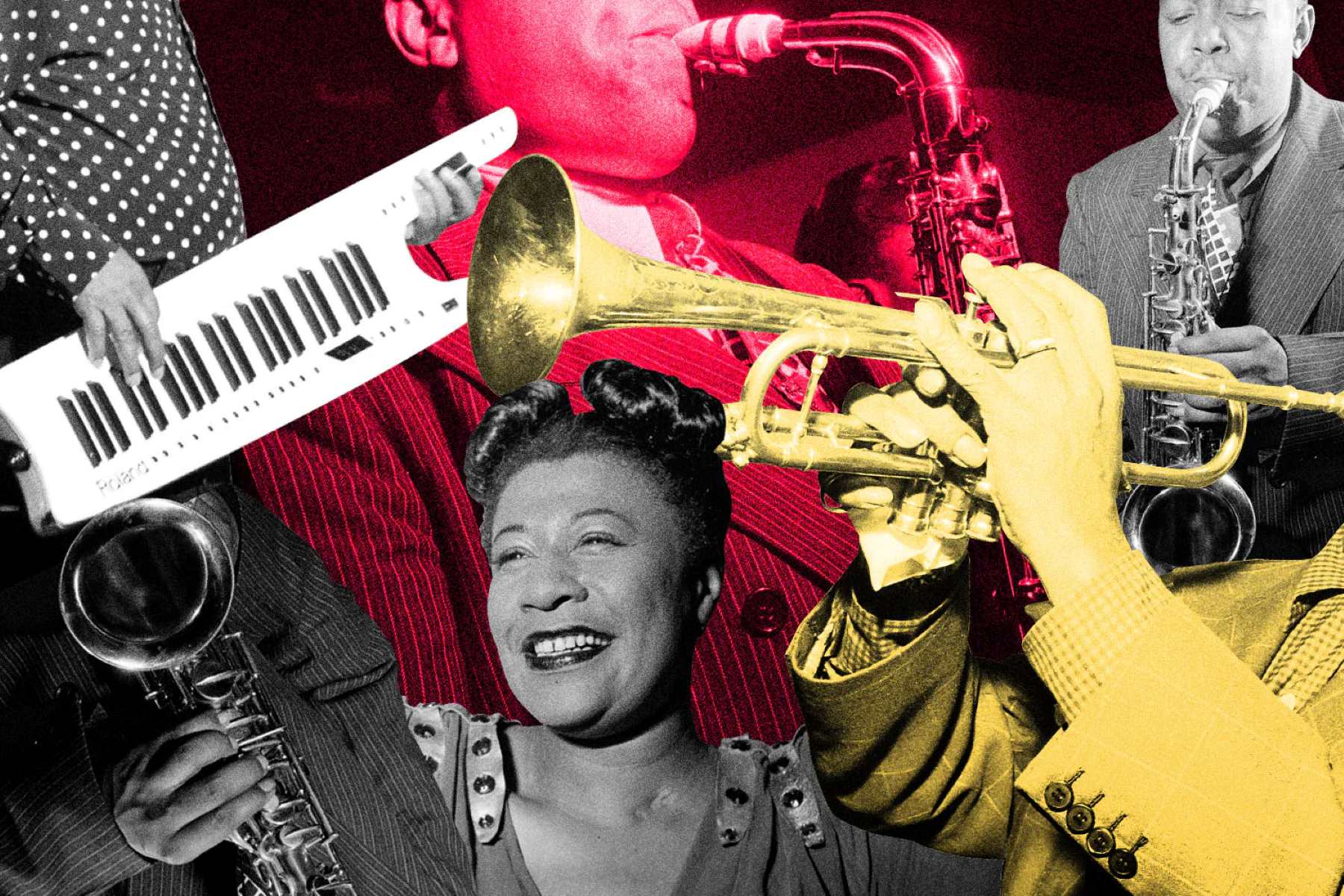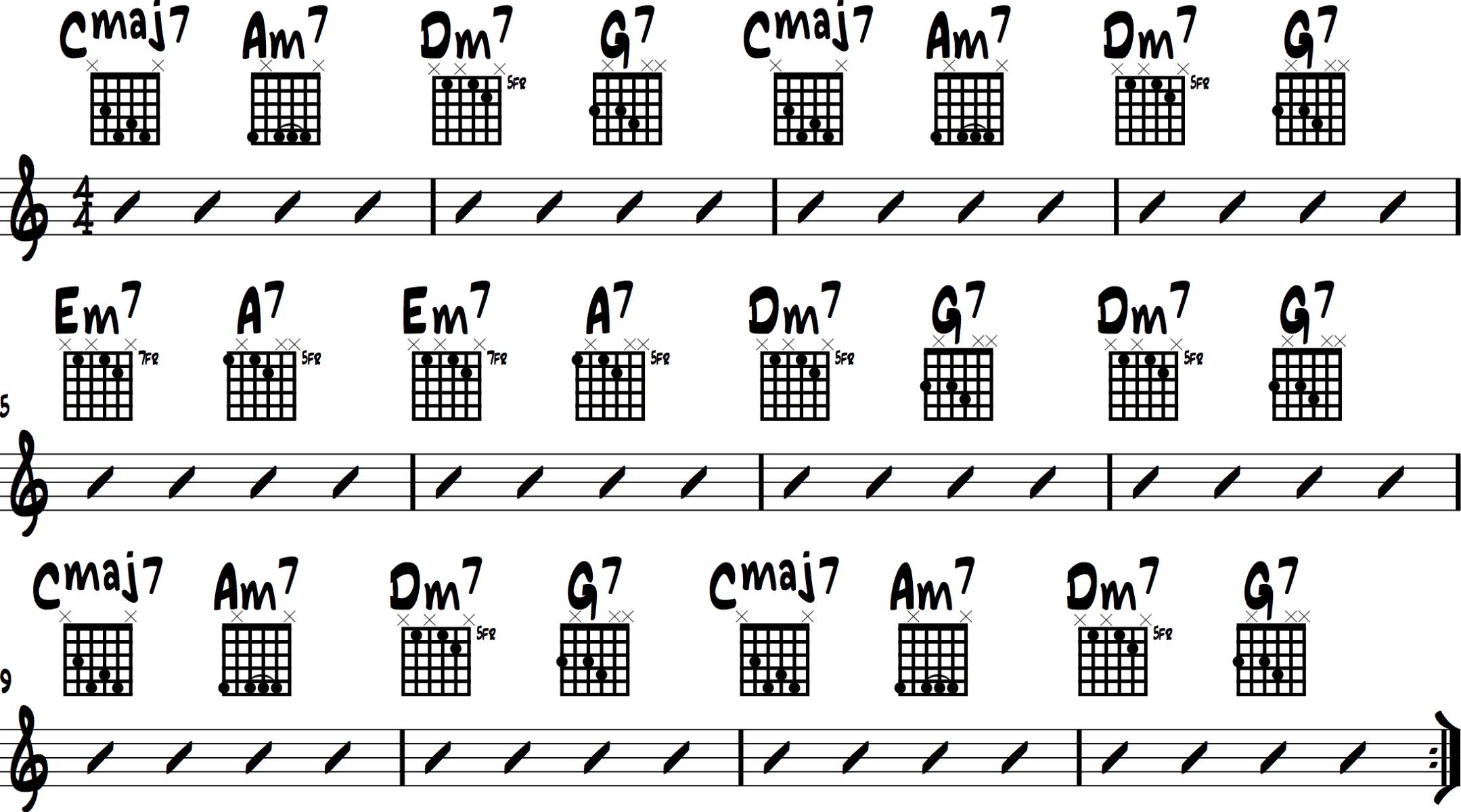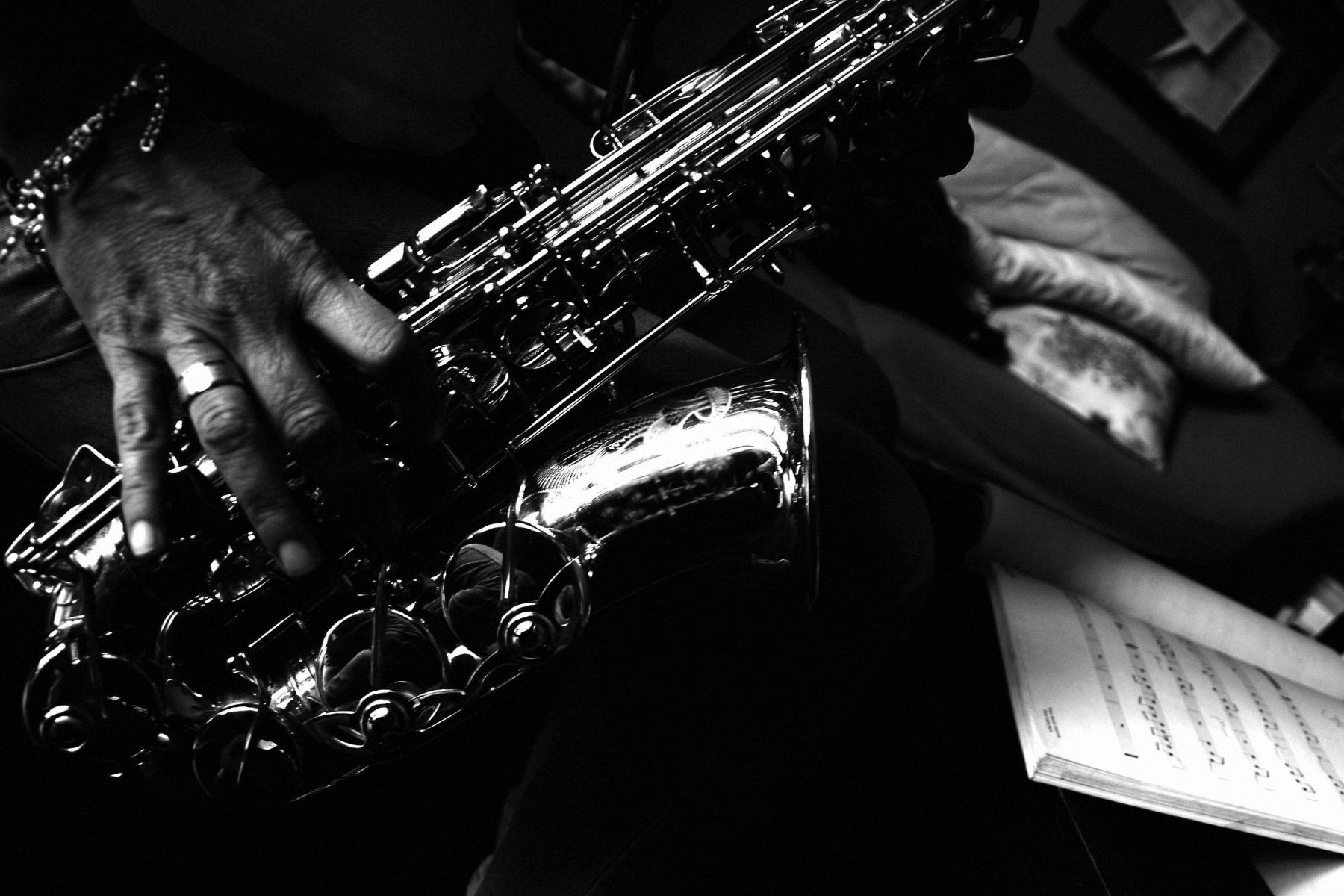

Jazz
When Was Jazz Most Popular
Modified: January 22, 2024
Discover the peak of Jazz's popularity and its impact on music history. Explore the influential era when Jazz reached its cultural zenith.
(Many of the links in this article redirect to a specific reviewed product. Your purchase of these products through affiliate links helps to generate commission for AudioLover.com, at no extra cost. Learn more)
Table of Contents
Introduction
Jazz, a genre of music born out of African American cultural expression, has a rich and vibrant history that spans over a century. Known for its improvisation, syncopation, and expressive qualities, jazz has captivated audiences and transformed the music landscape. It emerged in the early 20th century and quickly gained popularity, influencing other genres and leaving an indelible mark on the world of music.
With its origins rooted in African musical traditions, European harmonic structures, and the unique experiences of African Americans, jazz became a symbol of cultural identity and a powerful form of artistic expression. From its early beginnings to its modern innovations, jazz has evolved, adapted, and transcended boundaries.
In this article, we will explore the various milestones in the popularity of jazz throughout history. We’ll delve into the early beginnings of jazz, its rise to prominence during the Roaring Twenties, the golden age of swing, the decline in popularity with the advent of rock and roll, the jazz revival, and the innovative developments in modern jazz.
Join us on this journey through time as we unravel the story of jazz, its rise and fall, and how it continues to inspire musicians and captivate listeners even today.
Early Beginnings of Jazz
The roots of jazz can be traced back to the late 19th century in the African American communities of New Orleans, Louisiana. It was in these vibrant neighborhoods where African, Caribbean, and European musical traditions merged, giving birth to a new musical form – jazz.
Derived from ragtime, blues, and marching band music, early jazz was characterized by its syncopated rhythms, improvisation, and call-and-response style. Musicians would gather in informal gatherings known as “jam sessions” or “cutting contests,” where they would engage in friendly musical battles, showcasing their skills and creativity.
Legendary pioneers like Louis Armstrong, Jelly Roll Morton, and Buddy Bolden pushed the boundaries of music, introducing new techniques and innovation. They laid the foundation for what would become a global sensation.
One of the key features of early jazz was its deep connection to dance. With the rise of social dances like the Charleston and the Lindy Hop, jazz became the perfect soundtrack for people to let loose and express themselves. Jazz bands started playing in dance halls, clubs, and speakeasies, creating an infectious energy that swept across the nation.
During this time, jazz was primarily performed and appreciated within the African American community. However, its popularity gradually spread beyond these boundaries. The distinctive sound and lively rhythms of jazz appealed to people from all walks of life, transcending racial and cultural barriers.
The early recordings of jazz by artists like the Original Dixieland Jazz Band and the King Oliver Creole Jazz Band helped to bring this music to a wider audience. The enchanting melodies and energetic rhythms resonated with people across the country, leading to an increased demand for live performances and recordings.
As the popularity of jazz grew, it also faced criticism and resistance. Some conservative elements saw jazz as rebellious and immoral, associating it with illicit activities and social unrest. However, the allure and infectiousness of jazz could not be contained, and it continued to spread its influence throughout the country.
The impact of the early beginnings of jazz cannot be overstated. It laid the groundwork for the future development of the genre and set the stage for its meteoric rise in the following decades. From New Orleans to the rest of the world, jazz was on its way to becoming a global phenomenon.
The Roaring Twenties: Jazz Takes Center Stage
The 1920s, commonly known as the Roaring Twenties or the Jazz Age, marked a significant turning point in the popularity of jazz. As the United States experienced a period of economic prosperity and social liberation, jazz music became a symbol of the cultural revolution that was taking place.
The Jazz Age was characterized by a spirit of rebellion and a desire for new forms of entertainment. Jazz music, with its vibrant rhythms and energetic improvisation, perfectly encapsulated the excitement and freedom of the era. It was the soundtrack of a generation looking to break free from the constraints of the past.
Jazz clubs, speakeasies, and dance halls became epicenters of the roaring nightlife. People flocked to these venues to experience the exhilarating atmosphere and dance to the infectious rhythms of jazz. It was during this time that iconic jazz figures like Duke Ellington, Count Basie, and Bessie Smith rose to prominence, capturing the hearts of audiences with their unparalleled talent and charisma.
Not only did jazz dominate the music scene, but it also influenced other forms of art and culture. It inspired literature, fashion, visual arts, and even the way people danced. The frenetic and syncopated movements of the Charleston and the Black Bottom reflected the syncopated rhythms of jazz music, creating a cultural fusion that was both groundbreaking and electrifying.
With the advent of recorded music, jazz recordings reached a wider audience. This accessibility allowed jazz to transcend geographical boundaries and spread its influence across the country and beyond. The popularity of jazz soared, captivating listeners of all backgrounds and demographics.
One of the pivotal moments in the rise of jazz during the Roaring Twenties was the emergence of the Harlem Renaissance. Centered in Harlem, New York City, this cultural movement celebrated African American art, literature, and music, with jazz serving as its anthem. The Harlem Renaissance played a crucial role in elevating the status of jazz as a legitimate art form, deserving of recognition and respect.
Jazz had truly taken center stage. Its infectious rhythms and captivating melodies permeated every corner of society, propelling it into the mainstream. The Roaring Twenties marked a golden era for jazz, with its popularity reaching unprecedented heights.
However, as the 1920s came to a close, the landscape of popular music was about to undergo a seismic shift. The rise of new genres and the impact of the Great Depression would pose new challenges for jazz’s dominance, leading to a decline in its popularity. But the Jazz Age had laid a strong foundation, leaving an enduring legacy for jazz to build upon in the years to come.
The Swing Era: Jazz’s Golden Age
The 1930s and 1940s were a transformative period for jazz, as a new subgenre called swing took the world by storm. The swing era is often referred to as jazz’s golden age, a time when big bands reigned supreme and dance halls were filled with enthusiastic revelers.
Characterized by its infectious, upbeat rhythms and emphasis on ensemble playing, swing music captivated audiences with its energy and optimism. Big bands, featuring a large ensemble of musicians, became the hallmark of this era. Legendary bandleaders such as Benny Goodman, Duke Ellington, and Count Basie assembled talented musicians who brought swing to life.
Swing music was the perfect antidote for a nation grappling with the challenges of the Great Depression. Its lively and uplifting sound provided a much-needed escape from hardship and inspired hope for a brighter future.
The popularity of swing music reached its peak during this time, with radio broadcasts and live performances bringing the joy of swing to millions of listeners. Dance halls and ballrooms filled to capacity as people swayed and shuffled to the swinging rhythms. The Lindy Hop and the Jitterbug became the dance crazes of the era, and swing music infiltrated every aspect of society.
With the rise of swing, jazz became a truly democratic art form. It transcended racial and social barriers, bringing people together on the dance floor. The big bands featured both black and white musicians, challenging societal norms and fostering a spirit of unity in the face of racial segregation.
Another significant aspect of the swing era was the emergence of vocalists who further popularized the genre. Artists such as Ella Fitzgerald, Billie Holiday, and Frank Sinatra graced the stage alongside the big bands, their velvety voices adding a new dimension to swing music’s allure.
However, like any musical golden age, swing’s prominence eventually began to wane. World War II brought about changes in music consumption, with a shift towards smaller ensembles and a focus on personal expression. The end of the swing era marked the beginning of a decline in the popularity of big bands, paving the way for new genres and styles to emerge.
Nevertheless, the swing era remains a cherished chapter in the history of jazz. It showcased the genre’s endless possibilities and introduced jazz to a global audience. The rhythmic exuberance and collective improvisation of swing left an indelible mark on the music world, cementing its place as jazz’s golden age.
Decline in Popularity: The Rise of Rock and Roll
As the 1940s gave way to the 1950s, the landscape of popular music underwent a seismic shift that would have a profound impact on the popularity of jazz. The rise of rock and roll, with its electrifying energy and rebellious spirit, signaled a decline in the mainstream appeal of jazz.
Rock and roll emerged as a powerful cultural force, capturing the attention and hearts of the younger generation. Its fusion of rhythm and blues, country, and gospel music created a fresh and exciting sound that resonated with the post-war youth. The rebelliousness and individualism of rock and roll stood in stark contrast to the more traditional and collective nature of jazz.
Rock and roll’s emphasis on electric guitars, pounding drums, and powerful vocals marked a departure from the big band sound of jazz. The new genre drove a wedge between generations, as parents clung to the elegant melodies of swing while their children embraced the raw energy of rock and roll.
The accessibility and mass appeal of rock and roll also played a role in the decline of jazz’s popularity. The advent of television and the widespread availability of radio broadcasts allowed rock and roll to reach a wider audience, overshadowing the jazz scene. Rock and roll icons such as Elvis Presley, Chuck Berry, and Little Richard became cultural icons, leaving little room for jazz in the mainstream limelight.
The decline in jazz’s popularity was also influenced by larger societal changes. The civil rights movement and the fight against racial segregation brought new voices and perspectives to the forefront of popular music. African American artists, once celebrated in the jazz world, began to explore other genres and styles to assert their creativity and address social issues.
Despite the decline in mainstream popularity, jazz continued to evolve and adapt. It found refuge in smaller clubs, underground scenes, and niche audiences that appreciated its artistic depth and sophistication. Jazz musicians experimented with new sounds, incorporating elements of rock, funk, and even avant-garde music, pushing the boundaries of the genre.
The decline in jazz’s popularity with the rise of rock and roll does not diminish its enduring legacy. Jazz remains an integral part of music history, influencing countless genres and continuing to inspire musicians to this day. Its impact on improvisation, musical expression, and cultural diversity cannot be overstated.
The rise of rock and roll may have shifted the musical landscape, but jazz continues to thrive as a cherished and treasured art form, appreciated by those who seek its distinctive and soulful sounds.
Jazz Revival: Rediscovering the Classics
While the decline of jazz’s mainstream popularity continued into the 1960s and 1970s, a parallel movement was taking place – the jazz revival. This period saw a resurgence of interest in the classic jazz styles of the past, as musicians and audiences rediscovered the beauty and innovation of early jazz.
One of the key factors contributing to the jazz revival was the growing appreciation for jazz as an art form. Jazz began to be studied and taught in academic institutions, leading to a deeper understanding of its rich history and cultural significance. Jazz education programs and workshops helped cultivate a new generation of talented jazz musicians, ensuring the continued vitality of the genre.
Additionally, recordings of jazz legends from the early years became more widely available. Reissued albums and compilation releases allowed the younger generation to explore the timeless recordings of Louis Armstrong, Duke Ellington, and other jazz pioneers. These recordings served as a source of inspiration and education, spurring a renewed interest in the classic jazz styles and techniques.
Jazz festivals also played a crucial role in the revival of the genre. Events such as the Newport Jazz Festival and the Montreux Jazz Festival provided platforms for both established and emerging jazz artists to showcase their talents. These festivals attracted diverse audiences, bringing jazz into the mainstream consciousness once again.
The jazz revival era also witnessed the emergence of jazz fusion, a genre that combined elements of jazz with rock, funk, and other contemporary styles. Artists such as Miles Davis, Herbie Hancock, and Weather Report blurred the line between genres, incorporating electric instruments and experimental approaches to create a fresh and innovative sound. Jazz fusion appealed to a broader audience, bridging the gap between jazz and popular music.
As the jazz revival gained momentum, jazz clubs and venues across the world experienced a resurgence of interest. Jazz enthusiasts flocked to intimate settings to experience the energy and improvisation that is the essence of jazz. Small-group performances and jam sessions became popular, allowing musicians to connect and collaborate in a more intimate setting.
The jazz revival not only celebrated the classics but also embraced the evolution and diversity of the genre. It showcased the enduring power of jazz and reaffirmed its position as a vibrant and ever-evolving art form.
Today, the legacy of the jazz revival can still be felt. Jazz festivals continue to attract large crowds, and jazz education programs flourish. Jazz has retained its ability to inspire and captivate, and its influence can be heard in genres ranging from hip-hop to electronic music. The jazz revival era serves as a reminder of the timeless allure and artistic depth of this remarkable genre.
Modern Jazz: Pushing Boundaries and Innovations
In the latter half of the 20th century and continuing into the present day, modern jazz has been characterized by its relentless pursuit of innovation and boundary-pushing creativity. The genre has evolved and expanded, incorporating new influences, embracing experimentation, and defying traditional conventions.
Modern jazz musicians have sought to push the boundaries of what is considered jazz, incorporating elements from other genres such as rock, funk, world music, and even electronic music. Artists like John Coltrane, Ornette Coleman, and Herbie Hancock challenged the rules of harmony, rhythm, and improvisation, paving the way for a new wave of jazz expression.
One of the key developments in modern jazz was the emergence of free jazz. This radical subgenre rejected the concept of predetermined chord progressions and embraced complete improvisation. Free jazz allowed musicians to explore new sonic territories, pushing the boundaries of what was considered musical structure.
The influence of modern jazz extended beyond the music itself. It inspired visual artists, poets, and dancers who sought to explore new artistic possibilities. The connection between jazz and other art forms became a driving force in the modern jazz movement, leading to collaborations and interdisciplinary creations.
Technological advancements also played a significant role in shaping modern jazz. The use of electric instruments, synthesizers, and computers opened up new sonic possibilities and expanded the palette of sounds available to jazz musicians. Artists like Miles Davis, with his groundbreaking album “Bitches Brew,” merged jazz with elements of rock and electronic music, setting the stage for future innovators.
Another profound shift in modern jazz was the reevaluation and reinterpretation of the jazz standards. Musicians began to approach familiar repertoire with fresh perspectives, incorporating their unique voice and reshaping the compositions. This revitalization of the jazz canon breathed new life into familiar tunes, maintaining a connection to jazz’s roots while pushing forward into new creative realms.
Modern jazz is characterized by its emphasis on individuality and personal expression. Musicians are encouraged to develop their unique voice and explore their artistic identity. The diversity within the genre is immense, ranging from the intricately composed works of Maria Schneider to the avant-garde explorations of Kamasi Washington, showcasing the vast range of possibilities within modern jazz.
As modern jazz continues to evolve, it remains a driving force in the ever-changing landscape of music. It serves as a reminder that jazz, at its core, is a dynamic and living art form, constantly pushing boundaries, and inspiring new generations of musicians to break free from conventions and forge new paths.
Conclusion
Jazz, born out of African American cultural expression, has undeniably left an indelible mark on the music world. From its early beginnings in New Orleans to its modern-day innovations, jazz has continually evolved, adapted, and challenged societal norms. Throughout its history, jazz has faced fluctuations in popularity, but its enduring legacy and ability to captivate listeners have never wavered.
From the early rhythms of ragtime to the improvisational brilliance of swing, jazz found mainstream success and became synonymous with the exuberance and cultural revolution of the Roaring Twenties. However, the rise of rock and roll in the 1950s marked a turning point, leading to a decline in jazz’s mainstream appeal. Yet, even during this period, the jazz revival movement brought a renewed interest in the classic jazz styles, ensuring the music’s preservation and inspiring a new generation of enthusiasts.
Modern jazz continues to push boundaries and embrace innovation. Musicians are constantly seeking new ways to express themselves, incorporating influences from diverse genres and embracing technological advancements. Jazz remains a genre that champions personal expression, individuality, and artistic freedom.
While the popularity of jazz may ebb and flow, its unique characteristics and cultural contributions remain significant. Jazz has influenced countless artists and genres, leaving an enduring impact on music and popular culture. Its rich history, rooted in African American traditions and shaped by diverse influences, continues to inspire and captivate audiences around the world.
As we reflect on the journey of jazz, it is clear that this genre of music embodies the essence of human expression. It encapsulates the spirit of collaboration and improvisation, celebrating cultural diversity and encouraging artistic exploration. Jazz has the power to evoke a wide range of emotions, from joy and exhilaration to introspection and contemplation.
Whether we revisit the early roots of jazz or embrace the innovative sounds of modern jazz, this genre serves as a testament to the transformative power of music. It speaks to the soul, transcending language and cultural barriers.
So, as we continue to immerse ourselves in the melodies, rhythms, and improvisation that define jazz, let us appreciate its historic significance, honor its pioneers, and celebrate its enduring legacy. Jazz is not just a genre; it is a testament to the boundless creativity of the human spirit.



